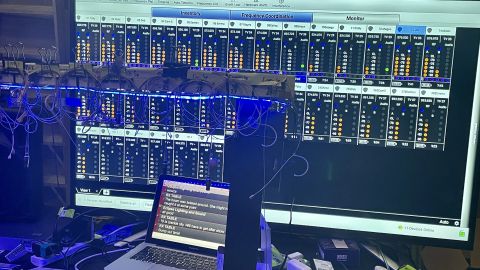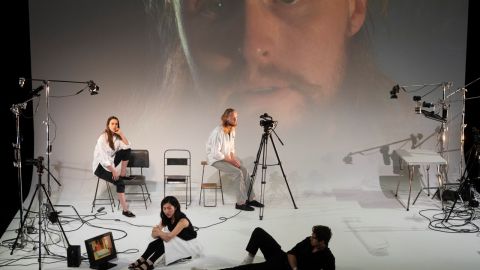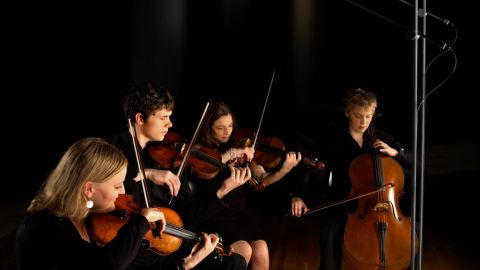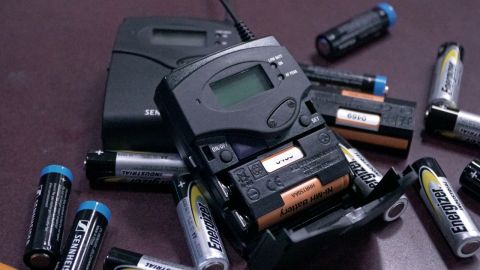To Buy or Not to Buy (and rent) ? That is the question...

Chris King from Multi-Image investigates whether it is more cost effective to buy moving lights for your venue or to rent them from your local production company.
To buy or not to buy is a question that is asked by many venue decision makers around the world. Do we purchase moving lights for our up and coming show or just rent them instead? In one instance that I can remember an excited young lad armed with brochures on the latest and greatest intelligent lights was trying to convince his community theatre committee into buying some moving lights. .. "we really need them, because they move and you can point the beam of light anywhere and they do all these really cool effects" … Whoa now hang on tiger. I think there are a few major things to consider before the new toys can be purchased (at a considerable cost to the venue).
Here is a quick checklist to help you decide.
1) How often will these lights be used? (be honest)
2) What are the running costs associated with these? Lamps etc...
3) What type of light do we need? (Profile or wash)
4) Moving head or moving mirror?
5) Who is going to service these lights?
6) How much is it going to cost to get fixed if it breaks?
7) Does anyone at the venue know how moving lights work?
8) How the heck do we control them? Is the desk at the venue capable of controlling the moving lights?
9) How much are they?
10) Are the lighting bars in the venue rated to mount the moving lights on?
11) How many do we need?
12) What type do we get. … A 1200w, 575w, 300w or 250watt version?
13) After sales support and also sales support for that matter … can someone show us how they work.
14) Noise … How noisy are the moving lights?
These are some of the main points to consider when looking at purchasing moving lights.
As with a lot of things, cost plays a major part.
Yes, there are moving lights available on the internet shopping websites at "unbelievably cheap prices," BUT before you grab the credit card and hit Buy Now … ask some questions. Why are they so cheap? How long are they going to last? What sort of after sales support do I get?
I was approached by a company with a funny name asking me to import some of their "lightings equipments" into the country. I asked the question. … What sort of after sales support do I get for myself and my customers and how reliable is your product … the response was "maybe it break but if it do we send you a new whole one." Judging by the picture on their website I would be stocking up on a fair few, just for spare parts!
Reliability is very important too. You can't afford to have the light in the repair shop all the time when it is required for work duties!
So, what type of light should you purchase?
Hmm. A hard question to answer, as a lot of times it is very venue and show specific. And it depends on budget.
Obviously a moving head profile would be ideal, as it will give you the ability to project gobos as well as colour and you may well be able to rotate the gobo too.
You can also focus the lights from your lighting desk.
A moving head will give you more flexibility than a moving mirror. A moving head, typically, will give you over 360 degrees of pan movement, whereas the moving mirror will give you at best 180 degrees.
A moving head wash light will only provide you with colour and no patterns. Generally they have Cyan Magenta and Yellow blades of glass which move over the top of one another to provide colour mixing. Most of them also have a colour wheel to achieve other colours.
The Design Spot range of moving lights from Elation Professional are a 'Hybrid' range of moving heads. They have 2 x gobo wheels - one rotates and the other is static.
The other very handy feature on these lights is the variable frost effect, which provides a wash effect. This means that if you mainly require a moving light for gobo projection, but occasionally require a wash light, a simple slide of a fader on a lighting desk and you have a wash light.
I have used these lights to great effect on many events.
Noisy moving lights can also be a distraction for the audience. There is nothing worse than sitting in a theatre and the actors lines are lost in the constant rumble of fan noise from the moving lights.
The Design Spot range has the ability for the fan speed to be controlled from the lighting desk.
Now we come to the question of how to control our new toys.
Does your lighting desk have the ability to control moving lights? Moving lights are channel hungry beasts, with some of them chewing up to 36 channels per fixture.
There are many ways to control moving lights, from consoles with faders to PC based controllers and even wireless lighting control from Iphones.
My advice. Do your research and ask lots of questions. Compare the brands and, if possible, arrange for an on site demonstration.
Moving lights are an amazing piece of technology, and, if maintained correctly and handled with care, should last for a few years.
Happy Lighting....





